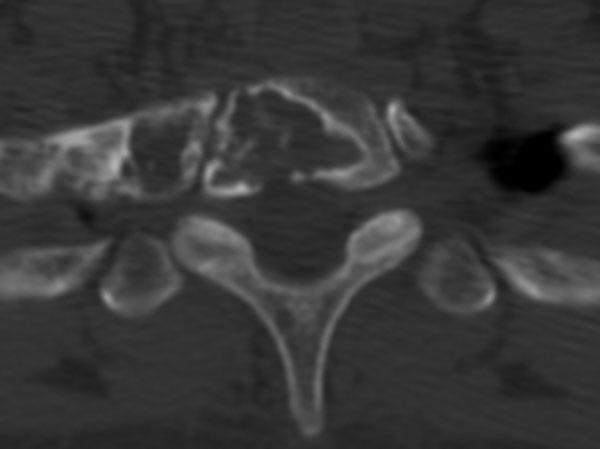A Forty-six-Year-Old Woman with a Lesion of the Upper Spine
August 17, 2011
A forty-six-year-old woman presented with an abnormality in the first thoracic vertebra that was noted incidentally on a chest radiograph made for unrelated reasons. A computed tomographic scan demonstrated an expansile, destructive lesion within the first rib and the first thoracic vertebral body (Fig. 1). The histological findings from a computed tomography-guided biopsy of this spinal lesion are shown in Figure 2. Bone scintigraphy did not show any other sites of disease.
The patient received no treatment but was followed on an annual basis with serial radiographs and computed tomography examinations (Fig. 3). Eleven years following the initial evaluation, she remained asymptomatic.
Proceed to Discussion >>Reference: Schoenfeld AJ, Koplin SA, Garcia R, Hornicek FJ, Mankin HJ, Raskin KA, Springfield D, Rosenberg AE, Schwab JH. Monostotic fibrous dysplasia of the spine. A report of seven cases. J Bone Joint Surg. Am. 2010;92:984-8.
Fibrous dysplasia is a rare fibro-osseous lesion of bone. The histologic aspects of fibrous dysplasia were first described by Lichtenstein, and the etiology of this condition has been linked to an activating mutation of the Gs alpha gene on chromosome 20, which leads to an increase in cyclic adenosine monophosphate availability. It may occur as a solitary lesion, but it can also present in multiple, or polyostotic, forms. The polyostotic form is also associated with McCune-Albright syndrome, in which the skeletal abnormalities are associated with characteristic café au lait spots and endocrine abnormalities. Fibrous dysplasia begins during skeletal development, but the clinical presentation depends on patient age and the location of the lesion. Lesions are most commonly encountered in the ribs, followed by the femur, tibia, maxilla, and calvaria. Monostotic fibrous dysplasia is more common than polyostotic fibrous dysplasia. However, polyostotic disease occurs in the spine more frequently, and most cases of monostotic fibrous dysplasia documented in the literature appear as simple case reports. Since monostotic fibrous dysplasia may be asymptomatic, it is likely that many patients with monostotic fibrous dysplasia of the spine are never evaluated. According to the literature, the most common presenting symptom for patients with monostotic fibrous dysplasia of the spine is pain. A search of the literature revealed that the cases of thirty-one patients with monostotic fibrous dysplasia of the spine have been reported previously. The average age of the patients was 37.2 years (range, twelve to sixty-one years), with most individuals presenting between the third and fourth decades of life. There was a relatively equal distribution between male and female individuals, and monostotic fibrous dysplasia lesions were encountered in all regions of the spine. Axial pain in the location of the lesion was the most common presenting complaint, but radicular symptoms were reported by five patients, four of whom had involvement of the cervical spine. One patient presented with a pathologic fracture through the lesion, and one patient had paraparesis because of spinal cord compression. No instance of scoliosis was encountered. One patient who had malignant transformation in the thoracic spine was reported. In the cases of nearly all patients for whom treatment was recorded, the patients underwent surgical intervention. In two patients, a successful resolution of the symptoms was achieved with nonoperative management. There were no reports of patients with monostotic fibrous dysplasia of the spine who had been treated with bisphosphonates. The reported treatment of monostotic fibrous dysplasia in the spine varies widely, from surgical resection to biopsy and observation. Nonoperative management after biopsy confirmation of the diagnosis may be considered a viable option in the absence of neurologic findings or structural compromise. Recently, the pain associated with fibrous dysplasia lesions has been successfully treated with bisphosphonates. In a phase-II trial including patients with both polyostotic and monostotic fibrous dysplasia, there was a substantial decrease in bone pain with intravenous pamidronate after thirty-nine months of follow-up. On the basis of such findings, bisphosphonates could be considered for patients with pain related to monostotic fibrous dysplasia. The workup for patients with monostotic fibrous dysplasia of the spine should include an extensive medical evaluation, including measurement of serum calcium, serum phosphorus, bone-specific alkaline phosphatase, intact parathyroid hormone, 25-hydroxyvitamin D3, and creatinine-normalized urinary collagen cross-links, deoxypyridinoline, and pyridinoline. Many patients with monostotic fibrous dysplasia have been found to have either a vitamin-D deficiency or a phosphate-wasting disorder. Sarcomatous transformation in fibrous dysplasia is uncommon, although instances have been documented in the literature. Huvos et al. reported on the cases of twelve patients with fibrous dysplasia who had malignant transformation, with one patient who had previously been treated with external beam irradiation. The cases of twenty-eight patients who had malignant transformation were reported in a series from the Mayo Clinic, although none of the malignant lesions involved the spine. Sarcomatous transformation in monostotic fibrous dysplasia of the spine appears to be a rare occurrence, with only one such report in the literature.
Reference: Schoenfeld AJ, Koplin SA, Garcia R, Hornicek FJ, Mankin HJ, Raskin KA, Springfield D, Rosenberg AE, Schwab JH. Monostotic fibrous dysplasia of the spine. A report of seven cases. J Bone Joint Surg. Am. 2010;92:984-8.
Monostotic fibrous dysplasia
Langerhans cell histiocytosis
Aneursymal bone cyst
Ewing sarcoma

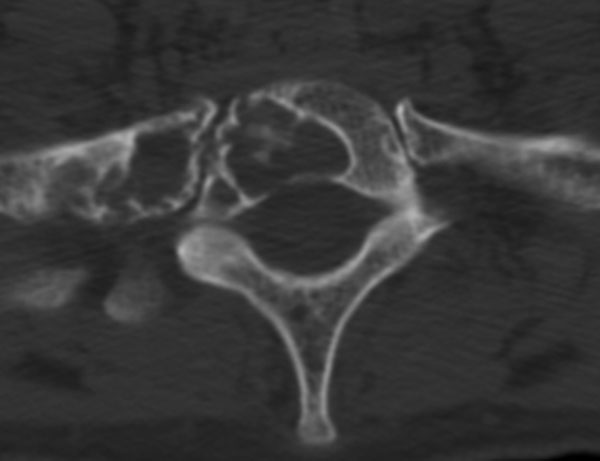
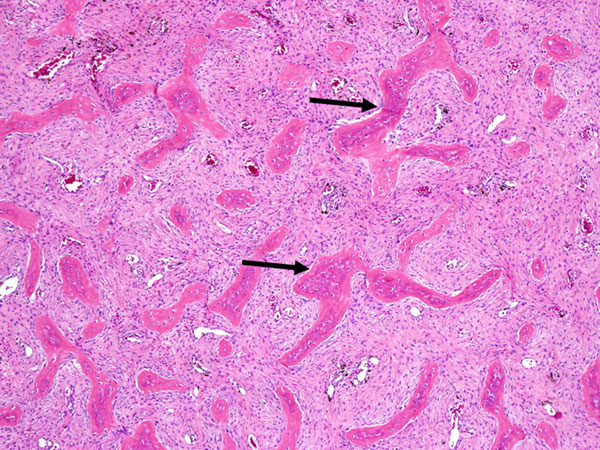
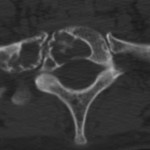 Fig. 1
Fig. 1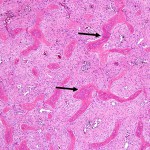 Fig. 2
Fig. 2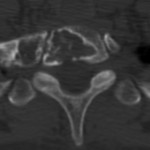 Fig. 3
Fig. 3